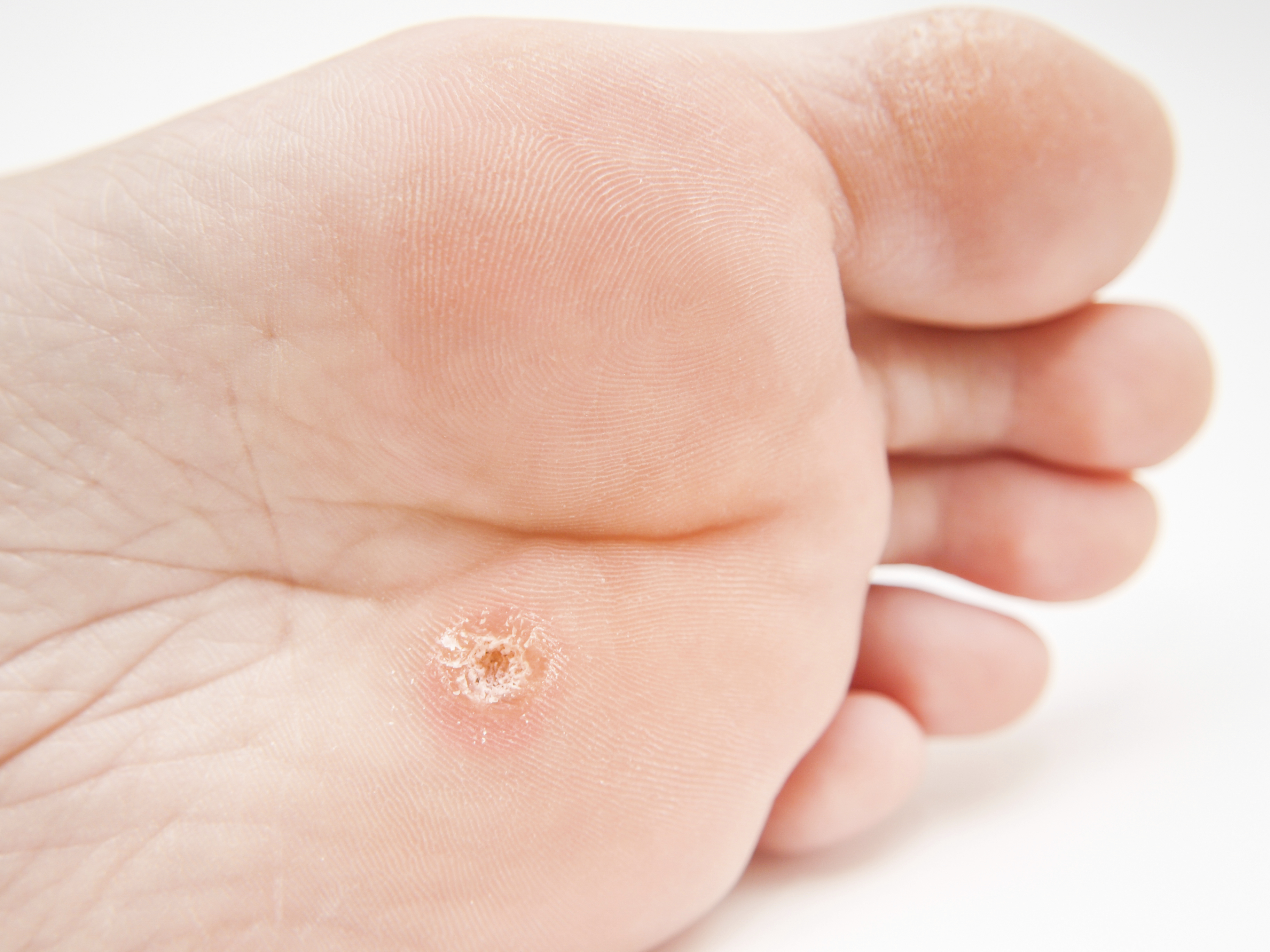Corns are small, defined areas of thickened skin that can either be painless, or be a massive source of pain. They tend to be conical in shape, pressing into the deeper layers of the foot. There are three main types of corns: Hard Corn – these are a compressed patch of hard, pale yellow skin with a dense core and are often present on the bottom, top or sides of the feet. These are medically known as Heloma Durum Soft Corn – these tend to be found between the toes. They have a whiter and softer appearance, often having an indent in the centre. They are softer due to absorbing moisture into the skin, such as from sweat or not drying the feet after showering. These often occur between the 4th and 5th toes and are medically known as Heloma Molle Seed Corn – these are much smaller and shallower than hard or soft corns, often likened to the size of a seed. Seed corns are tiny bumps that often occur on the bottom of the heel or ball of the foot. They may be painless or very painful. They often appear in clusters, though single seed corns also appear. These are medically known as Heloma Millare

Corns result from repeated focal pressure on the foot, such as rubbing of the skin against a shoe, wearing no socks with shoes, or foot deformities, to name a few. This means the longer you spend on your feet, the more likely you are to develop a corn. Altered foot shapes like bunions and clawed toes have a greater tendency to develop corns from the resulting friction with footwear. Women are more likely to develop corns due to wearing high heels and less supportive footwear than men. Corns are more prevalent with age as the skin thins and has less protection.
Aside from circular white/yellow patches of skin on the foot, symptoms include:
.jpg)
We safely and effectively remove most corns in the clinic. In most cases, this will alleviate painful symptoms immediately.
The next step is to stop them from recurring by removing the force or source of friction that is causing it. Improved footwear choices are the first step in alleviating corns. Deflective padding and digital corn devices are also indicated for treatment. To allow the area to heal and prevent future cases, your podiatrist may redistribute pressure on the foot with soft padding and strapping or deflective appliances that fit easily into your shoes. For corns on the toes, small foam sleeves, silicon sleeves and toe separators are useful for relieving pressure in affected parts. For those who have reduced fat pads under the balls of their feet, extra shock absorption silicone pads can be provided and can help to compensate for the loss of natural padding. Over-the-counter corn pads with medication are available but be wary; the salicylic acid on the corn pad may cause a chemical skin burn and an infection. These are definitely to be avoided by certain individuals, particularly those with systemic conditions such as diabetes. It is best to discuss the right treatment options for you with your podiatrist to ensure you achieve the best long-term outcome. It is important that you never cut corns or calluses yourself. Corns and callus are generally not harmful, but may sometimes lead to other problems, such as skin infections and ulcerations.

We’ve all had those days — you come home after hours on your feet, kick off your shoes, and notice your ankles look puffier than usual.
Swelling in the feet, ankles, or legs (known medically as edema) isn’t always a reason to panic. It can be as simple as a
salty lunch or a long flight.
But what if it’s happening more often — or seems to be getting worse? Swelling can sometimes be a sign of something more serious. Here’s
what could be going on and when to check in with your doctor.
.jpg)
Every year on October 8th, the world celebrates International Podiatry Day - a day dedicated to
raising awareness about foot health and the vital role that podiatrists play in our overall well-being.
Keeping your family on their feet and helping them to walk, run, play and exceed their goals is why we love getting up in the morning.
Ground Floor, One Health Building
122 Remuera Rd, Remuera
Auckland 1050, New Zealand
| MON - FRI | 7:30am – 6:30pm |
| SAT | 8:30am – 4:30pm |
| SUN | Some availability |
Make an Appointment
Online Schedule
Our virtual receptionist is available 24/7 to help with general questions, booking requests, and clinic information, even when our team is busy, or it's after hours.
Whether you're calling us or using our website, you'll get fast assistance any time of day. And if your query needs a personal touch, a member of our team will follow up as soon as possible.
If you’d like to see a podiatrist who speaks your preferred language, just give us a call and we’ll help you book.